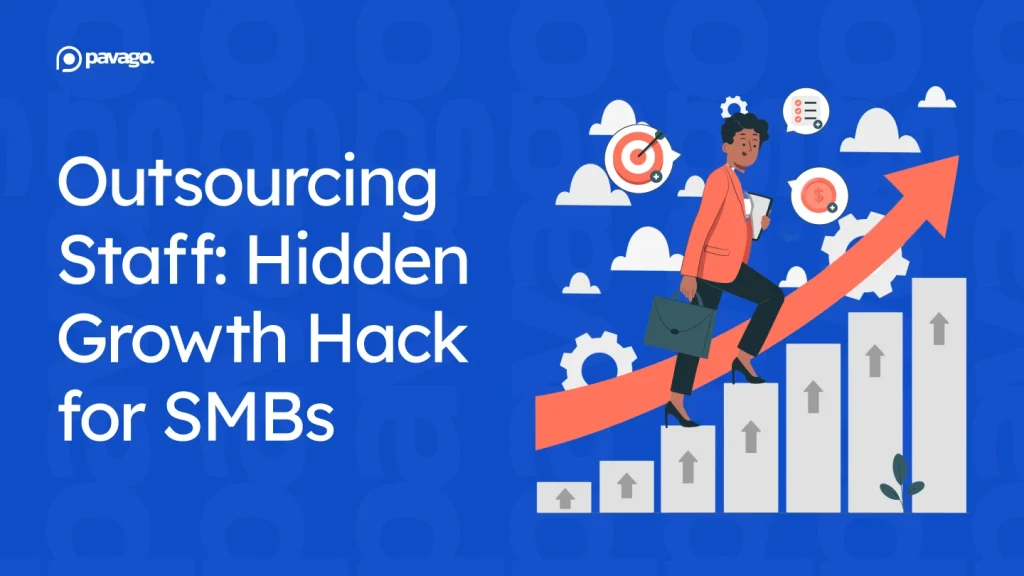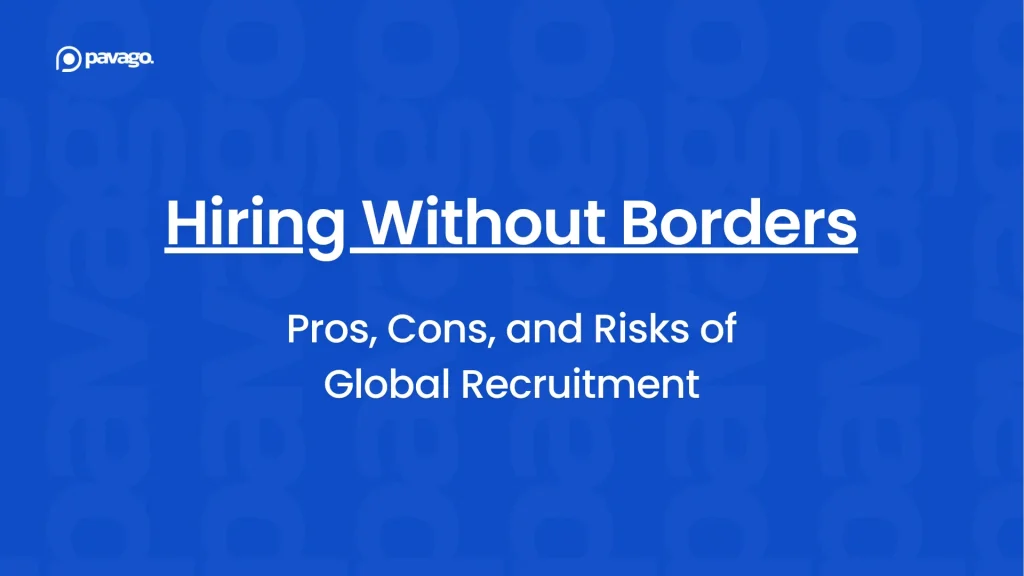For decades, outsourcing staff was just a cost-cutting tactic – mostly used for call centers and customer service.
Big corporations did it to save money.
Everyone else? They stuck to in-house teams because that’s just how things were done.
Not anymore.
Businesses today are outsourcing way beyond customer support.
We’re talking marketing, software development, HR, finance, and operations. Even roles that used to be “impossible” to outsource are now being filled by top global talent.
This shift isn’t just about lowering costs, it’s about hiring smarter.
Companies that used to handle everything internally are now leveraging offshore teams to scale faster, stay competitive, and unlock talent they couldn’t find locally.
In this guide, I’ll break down:
✅ Why outsourcing has become a growth strategy, not just a cost strategy
✅ The real benefits beyond saving money
✅ How to do it the right way—without sacrificing quality or productivity
Because the businesses that figure this out early? They win.
Let’s dive in.
What Roles Are Companies Outsourcing Nowadays?
At its core, outsourcing means hiring external professionals or teams to handle key business functions without putting them on your in-house payroll.
So, what kind of roles are businesses outsourcing today?
It’s no longer just customer service and IT support. Companies now outsource:
- Marketing – Companies are outsourcing several digital marketing roles to experts who know how to drive results.
- Software Development – Entire tech teams working remotely to build, test, and maintain applications.
- HR & Recruitment – Businesses are bringing in outsourced HR teams to handle hiring, onboarding remote employees, and compliance without a full-time HR department.
- Finance & Accounting – Payroll, bookkeeping, and financial planning are being outsourced to cut costs while staying compliant.
- Admin & Operations – Virtual assistants, project managers, and supply chain specialists are keeping businesses running without the overhead of full-time hires.
If a role doesn’t require someone to be physically present, companies are outsourcing it to top-tier professionals worldwide.
How Top Companies Use Outsourcing as Their Secret Growth Hack
Staff outsourcing isn’t just for startups trying to save cash.
It’s a smart scaling strategy used by some of the biggest brands in the world.
Take Slack, for example.
Before it became a billion-dollar company, Slack outsourced its app design to a Canadian agency. The result? A sleek, user-friendly interface that helped it take off.
WhatsApp did the same.
Before it was acquired by Facebook, the company outsourced its entire development team to engineers in Eastern Europe. It kept costs low while focusing on scaling its user base.
Even Google outsources.
From customer support to software testing, the tech giant relies on outsourced teams to handle operations while keeping internal teams focused on innovation.
So, what’s the takeaway?
The most successful companies don’t do everything in-house. They outsource strategically – not just to cut costs, but to:
✅ Move faster – Skip long hiring cycles and bring in experts immediately.
✅ Scale without risk – Expand without the overhead of full-time hires.
✅ Stay lean – Focus internal teams on growth while outsourcing everything else.

Beyond Cost Savings: The Real Benefits of Outsourcing Staff
Most people think outsourcing staff is just about cutting expenses. Sure, it saves money, but the real reason smart businesses do it?
It makes scaling easier, hiring faster, and operations smoother. Here’s how:
1. Faster Hiring & Scaling
Finding the right talent in-house can take weeks or even months. By virtual staff outsourcing, companies skip the long hiring cycles and bring in experienced professionals who can start immediately.
Need to scale your team for a big project? Just add more outsourced staff – no messy contracts or long-term commitments.
2. Access to Global Talent
Instead of being limited to local candidates, outsourcing opens the door to top talent worldwide. Companies can find specialists with niche expertise without overpaying for in-house hiring.
Whether it’s a senior developer, a marketing strategist, or a finance expert – outsourcing staff brings the right skills to your team without any geographical restrictions.
3. Flexibility Without Risk
Hiring full-time employees is a huge financial commitment. Salaries, benefits, office space – all of it adds up.
By outsourcing staff, businesses scale up or down based on demand, without long-term risk.
Need an extra developer for a six-month project? No problem. Want to test a new marketing strategy without committing to a full-time hire? Easily done.
Outsourcing staff isn’t just about saving money anymore. It’s about making businesses more agile and scalable.

How to Outsource Staff the Right Way
Outsourcing can be a game-changer, but only if you do it the right way.
Choose the wrong partner, set unclear expectations, or fail to integrate outsourced staff properly, and you’ll run into delays, quality issues, and wasted money.
Here’s how to outsource the smart way – so you get all the benefits without the pitfalls:
1. Identify What to Outsource
Not every task should be outsourced.
When I hop on calls with business owners, I always tell them: Start with the roles that don’t require in-house oversight but still take up valuable time.
If you or your team are spending hours on customer support, content creation, bookkeeping, or administrative work, that’s a clear sign it’s time to outsource.
Businesses that try to do everything in-house waste time on tasks that don’t directly contribute to growth.
Instead, focus on your strengths and outsource the rest. If a role doesn’t require someone to be physically present, it’s a great candidate for outsourcing.
2. Choose the Right Outsourcing Model
Decide which type of outsourcing fits your needs:
- Nearshore outsourcing – Hiring professionals from neighboring countries for easier communication and time zone alignment.
- Offshore outsourcing – Tapping into global talent pools, often at lower costs but with potential time zone challenges.
- Project-based outsourcing – Hiring experts for short-term projects or specialized tasks.
- Dedicated outsourcing – Bringing in long-term remote team members who function like in-house employees.
3. Work With a Reliable Outsourcing Partner
Finding the right talent can be overwhelming.
The best approach? Partner with a trusted outsourcing agency that does the heavy lifting – vetting candidates, handling legal contracts, and ensuring smooth onboarding.
That’s where Pavago comes in. We connect businesses with pre-vetted, highly skilled offshore professionals, so you can skip the hiring headaches and focus on growth.
4. Set Clear Workflows & Communication Channels
Even the best outsourced teams won’t perform well without clear expectations.
Use project management tools like Slack, Trello, Jira, or Asana to keep tasks organized, track progress, and maintain seamless collaboration between in-house and outsourced teams.
5. Start Small & Scale Gradually
Before outsourcing an entire department, test the waters with a trial project or a smaller team. This helps you evaluate performance, work culture fit, and any process adjustments needed – without major commitments upfront.
When done right, outsourcing staff doesn’t feel like outsourcing. It feels like building a stronger, more flexible team.
Related: Hiring Employees from Abroad – A Complete Guide
Common Mistakes in Outsourcing (And How to Avoid Them)
Outsourcing staff sounds like the perfect solution, but there are pitfalls that can trip you up if you’re not careful.
| Mistake | How to Avoid It |
|---|---|
| Rushing the hiring process | Take time to thoroughly vet candidates and test them with a small project before committing long-term. |
| Not defining expectations clearly | Set clear goals, KPIs, and timelines from the start. Regular check-ins ensure alignment. |
| Choosing the cheapest option | Prioritize value over price. Higher costs often lead to better quality and fewer problems down the line. |
| Lack of integration with in-house teams | Treat outsourced staff like in-house employees. Include them in meetings and ensure seamless communication. |
| Overlooking communication tools | Use project management tools like Trello, Slack, or Asana for smooth collaboration and transparency. |
How Pavago Makes Outsourcing Staff Seamless
Outsourcing staff doesn’t have to be complicated – Pavago makes it easy.
Here’s what sets us apart:
- Unlimited placements with flat fee: Our yearly membership gives you unlimited placements for just $500, so you can grow your team without additional fees for each hire.
- Affordable talent: We provide highly skilled candidates at just $329 per candidate, making it cost-effective to bring in top-tier professionals.
- Pre-vetted candidates: Skip the recruiting process – get access to pre-vetted, qualified professionals who are ready to contribute immediately.
With Pavago, you can scale your team efficiently while keeping costs low and quality high.
Ready to get started?
















